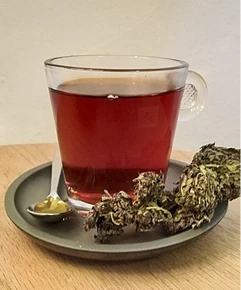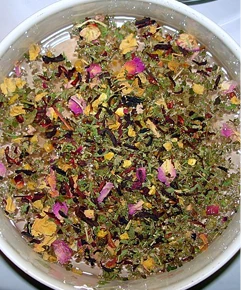
Green tea is a type of tea that is made from Camellia sinensis leaves and buds that have not undergone the same withering and oxidation process which is used to make oolong teas and black teas.[1] Green tea originated in China, and since then its production and manufacture has spread to other countries in East Asia.
Several varieties of green tea exist, which differ substantially based on the variety of C. sinensis used, growing conditions, horticultural methods, production processing, and time of harvest.

Tea consumption has its legendary origins in China during the reign of mythological Emperor Shennong.[2]
A book written by Lu Yu in 618–907 AD (Tang dynasty), The Classic of Tea (simplified Chinese: 茶经; traditional Chinese: 茶經; pinyin: chájīng), is considered important in green tea history. The Kissa Yōjōki (喫茶養生記 Book of Tea, lit. Record [of] Drinking Tea [for] Nourishing Life), written by Zen priest Eisai in 1211, describes how drinking green tea may affect five vital organs, the shapes of tea plants, flowers and leaves, and how to grow and process tea leaves.
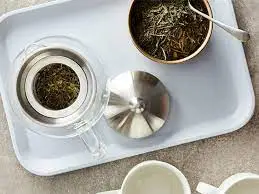
Steeping, or brewing, is the process of making tea from leaves and hot water, generally using 2 grams (0.071 oz) of tea per 100 millilitres (3.5 imp fl oz; 3.4 US fl oz) of water (H2O) or about 1 teaspoon of green tea per 150 ml cup. Steeping temperatures range from 61 °C (142 °F) to 87 °C (189 °F) and steeping times from 30 seconds to three minutes.
...Generally, lower-quality green teas are steeped hotter and longer while higher-quality teas are steeped cooler and shorter, but usually multiple times (2–3 typically). Higher-quality teas like gyokuro use more tea leaves and are steeped multiple times for short durations. Steeping too hot or too long results in the release of excessive amounts of tannins, leading to a bitter, astringent brew, regardless of initial quality. The brew's taste is also affected by the steeping technique; two important techniques are to warm the steeping container beforehand to prevent the tea from immediately cooling down, and to leave the tea leaves in the pot and gradually add more hot water during consumption.[citation needed]

Polyphenols found in green tea include epigallocatechin gallate (EGCG), epicatechin gallate, epicatechins and flavanols,[1] which are under laboratory research for their potential effects in vivo.[3] Other components include three kinds of flavonoids, known as kaempferol, quercetin, and myricetin.
...[4] Although the mean content of flavonoids and catechins in a cup of green tea is higher than that in the same volume of other food and drink items that are traditionally considered to promote health,[5] flavonoids and catechins have no proven biological effect in humans.[6][7]
Green tea leaves are initially processed by soaking in an alcohol solution, which may be further concentrated to various levels; byproducts of the process are also packaged and used.[citation needed] Extracts are sold over the counter in liquid, powder, capsule, and tablet forms,[3][8] and may contain up to 17.4% of their total weight in caffeine,[9] though decaffeinated versions are also available.[10]
Green tea extract is usable as a clean label food preservative, protecting fats from rancidity. The oil-soluble form used is palmitoylated green tea catechins, ruled generally recognized as safe in 2020.[11]
Tests of commercially popular teas have detected residues of banned toxic pesticides.[127][128]
Regular green tea is 99.9% water, provides 1 kcal per 100 mL serving, is devoid of significant nutrient content (table), and contains phytochemicals such as polyphenols and caffeine. Numerous claims have been made for the health benefits of green tea, but human clinical research has not found good evidence of benefit.[12][6][13] In 2011, a panel of scientists published a report on the claims for health effects at the request of the European Commission:
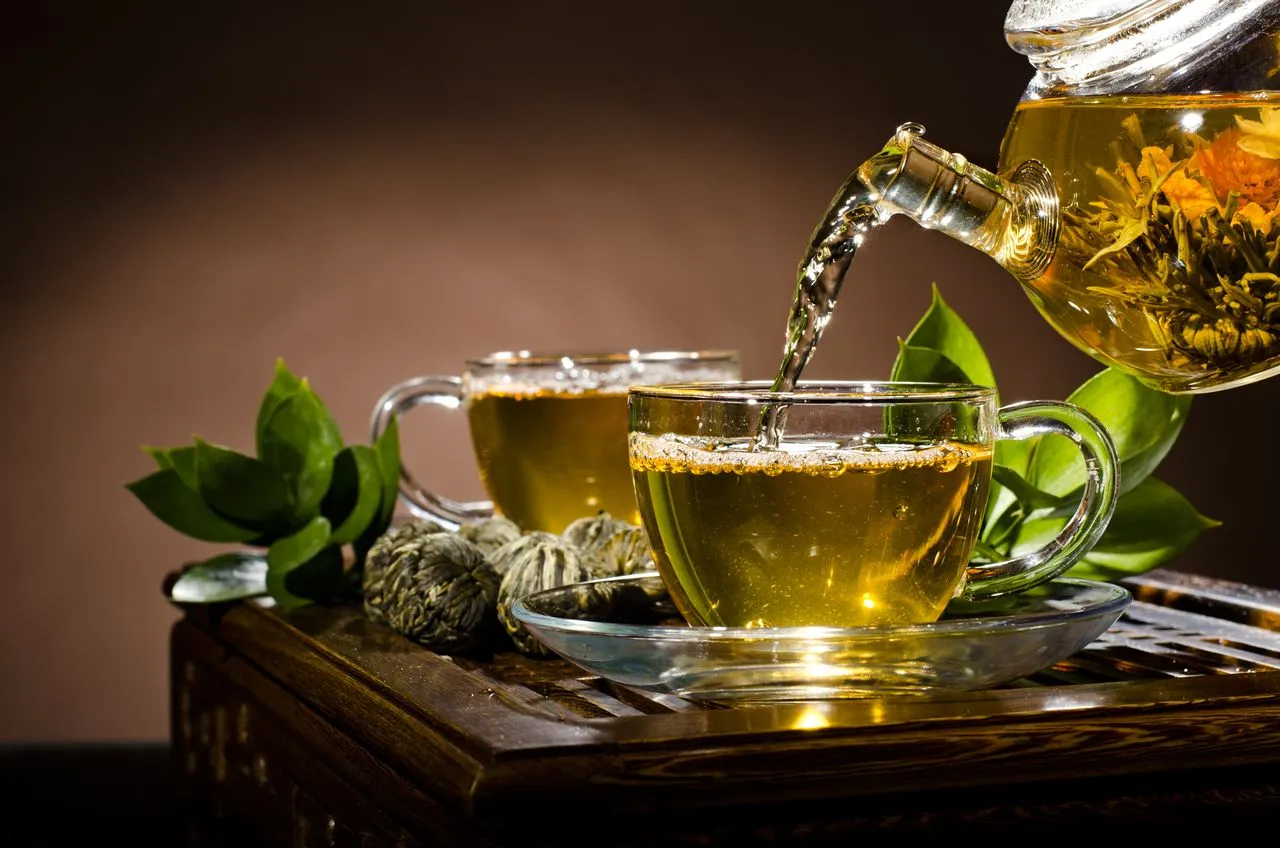
in general they found that the claims made for green tea were not supported by sufficient scientific evidence.[6] Although green tea may enhance mental alertness due to its caffeine content, there is only weak, inconclusive evidence that regular consumption of green tea affects the risk of cancer or cardiovascular diseases, and there is no evidence that it benefits weight loss.[12]
A 2020 review by the Cochrane Collaboration listed some potential adverse effects of green tea extract including gastrointestinal disorders, higher levels of liver enzymes, and, more rarely, insomnia, raised blood pressure, and skin reactions.[14]
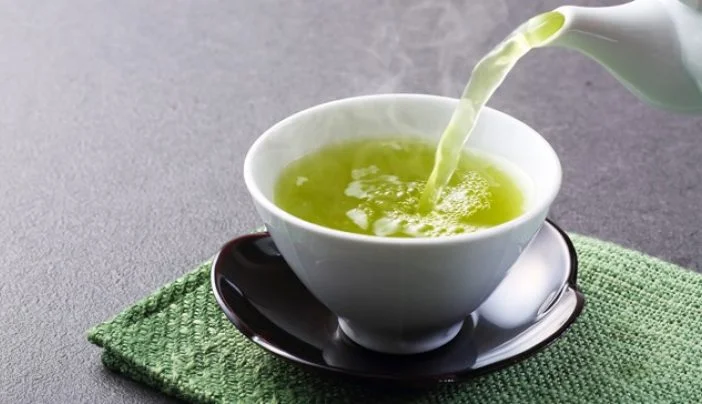
It has been suggested that it may inhibit cancer development and growth by preventing "cell damage" based on its antioxidant and anti-inflammatory properties
...However, Green tea interferes with the chemotherapy drug bortezomib (Velcade) and other boronic acid-based proteasome inhibitors, and should be avoided by people taking these medications.[16]
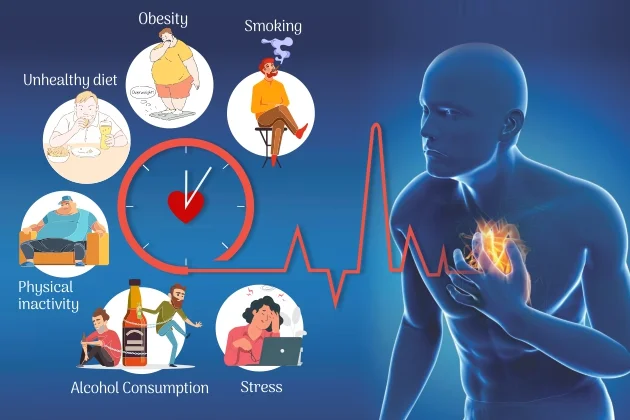
A meta-analysis of observational studies reported an increase in one cup of green tea per day was correlated with slightly lower risk of death from cardiovascular causes
Green tea consumption may be correlated with a reduced risk of stroke.[18][19] Meta-analyses of randomized controlled trials found that green tea consumption for 3–6 months may produce small reductions (about 2–3 mm Hg each) in systolic and diastolic blood pressures.[19][20][21][22] A separate systematic review and meta-analysis of randomized controlled trials found that consumption of 5-6 cups of green tea per day was associated with a small reduction in systolic blood pressure (2 mmHg), but did not lead to a significant difference in diastolic blood pressure.[23]
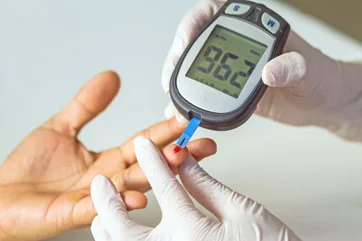
Green tea consumption lowers fasting blood sugar but in clinical studies the beverage's effect on haemoglobin A1c and fasting insulin levels was inconsistent.[24][25][26]

Drinking green tea or taking green tea supplements decreases the blood concentration of total cholesterol (about 3–7 mg/dL), LDL cholesterol (about 2 mg/dL), and does not affect the concentration
of HDL cholesterol or triglycerides.[23][24][27] A 2013 Cochrane meta-analysis of longer-term randomized controlled trials (>3 months duration) concluded that green tea consumption lowers total and LDL cholesterol concentrations in the blood.[24]

A 2015 systematic review and meta-analysis of 11 randomized controlled trials found that green tea consumption was not significantly associated with lower plasma levels of C-reactive protein levels (a marker of inflammation).[28]

There is no good evidence that green tea aids in weight loss or weight maintenance

Excessive consumption of green tea extract has been associated with hepatotoxicity and liver failure.[30][31][32] In 2018, a scientific panel for the European Food Safety Authority reviewed the safety of green tea consumption
...over a low-moderate range of daily EGCG intake from 90 to 300 mg per day, and with exposure from high green tea consumption estimated to supply up to 866 mg EGCG per day.[33] Dietary supplements containing EGCG may supply up to 1000 mg EGCG and other catechins per day.[33] The panel concluded that EGCG and other catechins from green tea in low-moderate daily amounts are generally regarded as safe, but in some cases of excessive consumption of green tea or use of high-EGCG supplements, liver toxicity may occur.[33]
